Physiological
Optimization Protocols
These targeted lifestyle actions integrate respiratory function, circadian rhythm alignment, nervous system regulation, and sleep optimization for enhanced health and performance.


The Critical Importance of Nasal Breathing
Nasal breathing should be maintained throughout all daily activities unless actively speaking or eating. Research has demonstrated that mouth breathing:
- Reduces oxygen uptake efficiency by 10–20%² ²¹
- Increases sympathetic (stress) activation¹⁰ ¹⁸ ²²
- Contributes to facial structural changes with chronic use¹ ³
- Bypasses nitric oxide production in the sinuses¹⁹ ²⁵
- Reduces airway protection and filtration⁵
- Accelerates dehydration by bypassing natural humidification, impairing mood and cognition⁴⁵ ⁴⁶


Morning Protocol
1. Nasal Breathing
- What to do: Breathe exclusively through your nose upon waking.
- Why it works: Boosts oxygen uptake, calms your nervous system, and starts nitric oxide production.² ¹⁸
- Benefits: Increases energy, lowers stress, and supports healthy breathing patterns.³
2. Diaphragmatic Breathing
- What to do: Use your diaphragm, expanding ribs and belly down toward the pelvic floor.
- Why it works: Strengthens core breathing mechanics, stabilizes posture, and improves oxygen delivery.²²
- Benefits: Reduces stress, sharpens focus, and prevents shallow chest breathing.²³
3. Nitric Oxide Boost
- What to do: Hum during nasal exhalation for 5–10 breaths.
- Why it works: Humming multiplies nitric oxide release, improving circulation and immune defense.²⁵ ²⁸
- Benefits: Enhances blood flow, oxygen delivery, and sinus health.¹⁹
4. Visual System Activation
- What to do: Track your eyes smoothly in all directions for 1 minute.
- Why it works: Trains eye–brain pathways and restores focus after sleep.⁶⁴
- Benefits: Improves balance, reduces anxiety, and boosts alertness.⁶⁶
5. Cervical Lymphatic Massage
- What to do: Gently massage your neck and upper shoulders for 1–2 minutes.
- Why it works: Encourages fluid drainage that supports brain and immune health.¹³ ⁵²
- Benefits: Reduces tension, clears waste, and promotes circulation.⁵³
6. Morning Movement
- What to do: Do 5–10 minutes of light activity (stretching, walking, yoga, or skipping) while nose breathing.
- Why it works: Boosts circulation and metabolism while reinforcing healthy breathing mechanics.⁸
- Benefits: Energizes the body, lifts mood, and improves posture.⁹
7. Natural Light Exposure
- What to do: Get outside within 30–60 minutes of waking.
- Why it works: Sunlight resets your body clock and boosts serotonin.³⁶
- Benefits: Improves mood, energy, and sleep quality later in the day.³⁵
8. Morning Cold Exposure
- What to do: End your shower with 30–60 seconds of cold water.
- Why it works: Activates norepinephrine and strengthens stress resilience.⁴³
- Benefits: Increases alertness, metabolism, and immune function.⁴²
9. Optimized Hydration
- What to do: Drink 32oz water with a pinch of salt before caffeine.
- Why it works: Replaces fluids lost overnight and balances electrolytes.⁴⁵
- Benefits: Supports brain function, digestion, and steady energy.⁴⁶
10. Breakfast Nutrition
- What to do: Avoid sugar and processed carbs. Choose a protein- and fiber-rich breakfast with healthy fats, and chew evenly on both sides of your jaw.
- Why it works: Protein balances blood sugar and supports neurotransmitters, while bilateral chewing evenly engages jaw muscles, promotes symmetry, and improves posture.
- Benefits: Stabilizes energy, reduces cravings, sharpens focus, and supports long-term jaw and spinal health.⁶¹ ⁷⁴ ⁷⁵


daily protocol
1. Diaphragmatic Nasal Breathing
- What to do: Keep breathing through your nose with your diaphragm, expanding the lower ribs and belly toward the pelvic floor.
- Why it works: Coordinates diaphragm, rib cage, and pelvic floor to maintain oxygen balance, spinal stability, and efficient breathing mechanics.² ⁴ ²³
- Benefits: Supports steady energy, healthy digestion, hydration, and promotes better posture by preventing forward-head and slouched positions.²² ²³
2. Movement (Stop Sitting)
- What to do: Every 1–2 hours, get up for a few minutes to walk, stretch, do squats, or anything but sitting in the same position.
- Why it works: Restores hips, posture, and diaphragm function lost during sitting.²³
- Benefits: Boosts energy, focus, and breathing efficiency.⁸ ⁹ ³⁰
3. Sunlight & Vitamin D
- What to do: Spend more time outdoors, away from wifi, closer to greenery and nature.
- Why it works: Sunlight triggers vitamin D synthesis, strengthens circadian rhythm, and boosts serotonin. ³⁶ ³⁹ ⁷³
- Benefits: Prevents vitamin D deficiency, supports immune and cardiovascular health, improves mood and energy, enhances sleep quality, and lowers chronic disease risk. ⁷⁰ ⁷² ⁴⁴
4. Visual System Reset
- What to do: Close your eyes for 1 minute every hour away from screens.
- Why it works: Reduces visual load and gives the brain a reset.⁵⁰
- Benefits: Less eye strain, sharper focus, lower stress.⁵¹
5. Meaningful Social Connection
- What to do: Spend 15+ minutes each day in genuine conversation.
- Why it works: Social connection lowers stress and inflammation.⁵⁷ ⁵⁸
- Benefits: Improves mood, immune health, and resilience.⁵⁹
6. Nutritional Choices
- What to do: Avoid alcohol, sugar, processed foods, and refined carbs. Focus on protein, fiber, and omega-3 fats.
- Why it works: Prevents blood sugar spikes and lowers inflammation.⁶⁰ ⁶²
- Benefits: Steady energy, brain support, and better gut health.⁶¹
7. Post-Meal Movement
- What to do: Take a 5–10 minute walk after meals.
- Why it works: Helps muscles absorb glucose without excess insulin.²⁹
- Benefits: Improves digestion, reduces blood sugar spikes, and keeps energy clear.³⁰
8. Stress-Release Humming
- What to do: Hum gently for 1–2 minutes while breathing through your nose.
- Why it works: Increases nitric oxide and calms the nervous system.²⁸
- Benefits: Reduces tension, clears sinuses, and improves blood flow.¹⁹
9. Midday Reset
- What to do: If tired, take a 20-minute non-sleep deep rest (eyes closed, guided or silent).
- Why it works: Activates parasympathetic recovery without deep sleep.⁶³
- Benefits: Recharges focus and reduces stress.
10. Daily Presence
- What to do: Pause for a few minutes to notice your breath, body, and surroundings.
- Why it works: Mindfulness reduces stress reactivity and strengthens attention.⁶⁸ ⁶⁹
- Benefits: Cultivates calm, sharper focus, and deeper appreciation.

Evening Protocol
1. Light Management
- What to do: Dim lights and avoid screens 1–2 hours before bed. Use red light or blue-blocking glasses if needed.
- Why it works: Prevents blue light from disrupting melatonin.³⁴ ³⁵
- Benefits: Faster sleep onset, stronger circadian rhythm alignment, and improved next-day alertness.³⁴ ³⁵
2. Pre-Sleep Restrictions
- What to do: Avoid caffeine within 8–10 hours of sleep, alcohol near bedtime, and heavy meals or intense exercise within 3 hours of bed.
- Why it works: Prevents disruptions in sleep quality and hormone balance.⁵⁴ ⁵⁵ ⁵⁶
- Benefits: Reduces nighttime awakenings, lowers reflux risk, and improves sleep architecture.⁵⁴ ⁵⁵ ⁵⁶
3. Thermal Regulation
- What to do: Take a warm shower 1–2 hours before bed.
- Why it works: Body cools afterward, triggering sleep onset.³¹ ³²
- Benefits: Shorter sleep latency and deeper slow-wave sleep.³¹ ³²
4. Relaxation Humming
- What to do: Before sleep, hum gently for 3–5 minutes while exhaling.
- Why it works: Activates the vagus nerve and boosts nitric oxide.²⁸
- Benefits: Calms the nervous system, enhances airway circulation, and promotes parasympathetic dominance before sleep.²⁸


sleep Protocol
1. Nasal Breathing for Sleep
- What to do: Keep your bedroom cool (~65°F/18°C), ventilated, and use a nasal dilator if needed.
- Why it works: Continuous nasal breathing maintains nitric oxide production and prevents CO₂ buildup.¹⁹ ²⁵
- Benefits: Improves oxygen efficiency, reduces awakenings, enhances deep sleep quality.² ⁴⁷
2. Sleep Schedule Consistency
- What to do: Go to bed and wake up at the same times daily, with no more than a 30-minute difference on weekends.
- Why it works: Regular schedules synchronize circadian clocks and hormone cycles.³⁶
- Benefits: Stabilizes energy, prevents metabolic disruption, and supports mood balance.¹² ³⁴ ³⁵ ³⁹
3. Sleep Position
- What to do: Sleep on your left side.
- Why it works: Side sleeping optimizes glymphatic clearance, reduces esophageal acid exposure, and decreases cardiac preload.
- Benefits: Supports glymphatic drainage, prevents reflux, stabilizes breathing, and lowers cardiac stress.³⁷ ³⁸ ⁴⁸ ⁵⁵
4. Nighttime Awakening Management
- What to do: If awake for ~20 minutes, avoid screens. Do a quiet, low-arousal activity until sleepy.
- Why it works: Maintains melatonin production and reinforces healthy sleep associations.³⁴ ³⁵
- Benefits: Shortens return-to-sleep time, reduces nighttime stress, preserves circadian integrity.³⁹

Weekly Protocols
1. Deliberate Heat Exposure (1-3 times weekly)
- What to do: Spend 15–20 minutes in a dry sauna (80–100 °C) or take a hot bath (40–42 °C).
- Why it works: Heat helps your body adapt to stress, boosts circulation, and supports recovery.⁴²
- Benefits: Supports heart health, lowers disease risk, improves recovery, and builds resilience.⁴²
2. Extended Cold Exposure (1-2 times weekly)
- What to do: Immerse in cold water (50–59 °F / 10–15 °C) for 2–5 minutes while nose breathing.
- Why it works: Cold water trains your body to handle stress, boosts energy, and strengthens defenses.⁴³
- Benefits: Reduces inflammation, sharpens metabolism, supports immunity, and builds resilience.⁴³
3. Extended Nature Exposure
- What to do: Spend at least 2 hours outdoors in natural environments (forests, parks, or near water).
- Why it works: Time in nature lowers stress and restores balance through fresh air and natural light.⁴⁴
- Benefits: Lowers stress hormones, boosts mood, strengthens immunity, and supports lung health.⁴⁴

Integration and Implementation
These protocols work together to optimize respiratory function through nasal breathing, align circadian rhythms through light and activity timing, enhance neurological restoration through optimized sleep, and build resilience through hormetic stress.
For optimal results:
- Begin by implementing the foundational nasal breathing practice throughout the day.
- Add morning and evening protocols next, as these "bookend" your day with optimal practices.
- Gradually incorporate midday protocols to maintain physiological balance throughout the day.
- Add weekly protocols as you establish consistency with daily practices
By implementing these practices consistently, you can support comprehensive health enhancement and long-term physiological resilience.
WANT TO IMPROVE YOUR BREATHING EVEN MORE?
¹ Lieberman, D. E., Krovitz, G. E., Yates, F. W., Devlin, M., & St. Claire, M. (2004). Effects of food processing on masticatory strain and craniofacial growth in a retrognathic face. Journal of Human Evolution, 46(6), 655–677. https://doi.org/10.1016/j.jhevol.2004.03.005 (PMID: 15183669)
² Morton AR, King K, Papalia S, Goodman C, Turley KR, Wilmore JH. Comparison of maximal oxygen consumption with oral and nasal breathing. Aust J Sci Med Sport. 1995 Sep;27(3):51-5. https://pubmed.ncbi.nlm.nih.gov/8599744 (PMID: 8599744)

